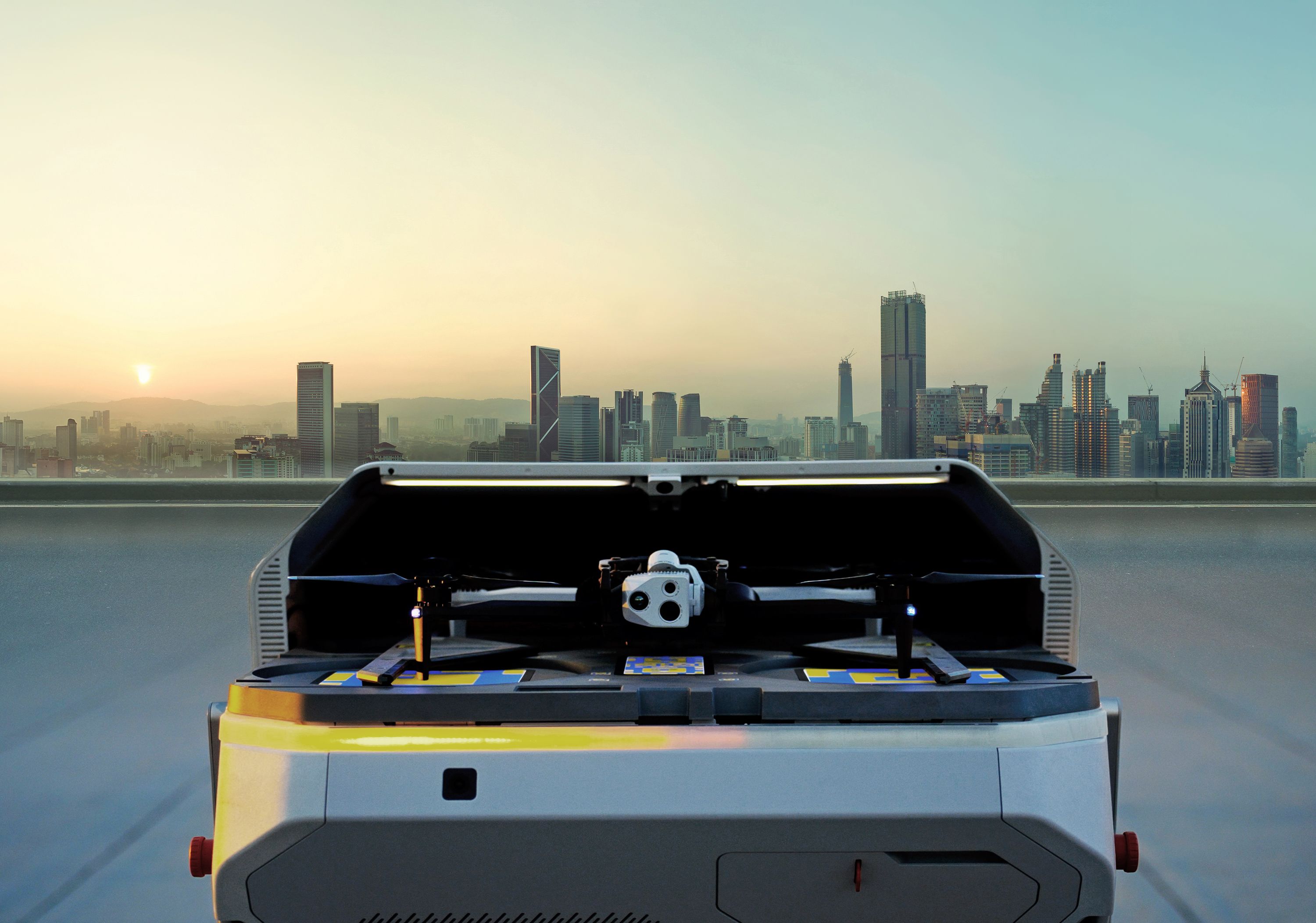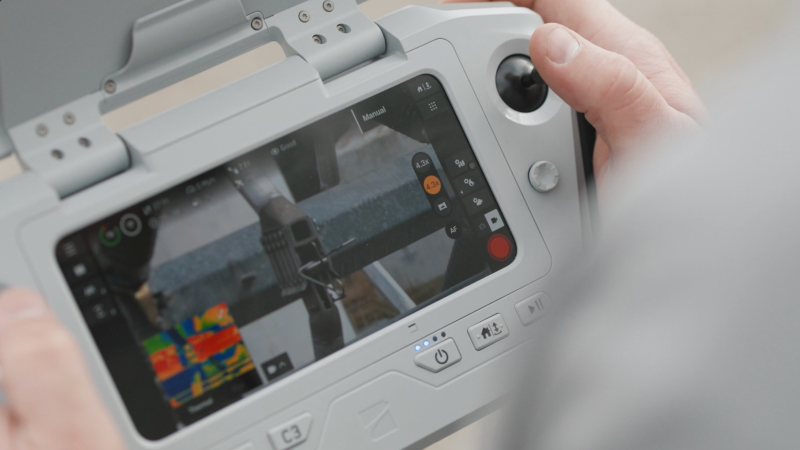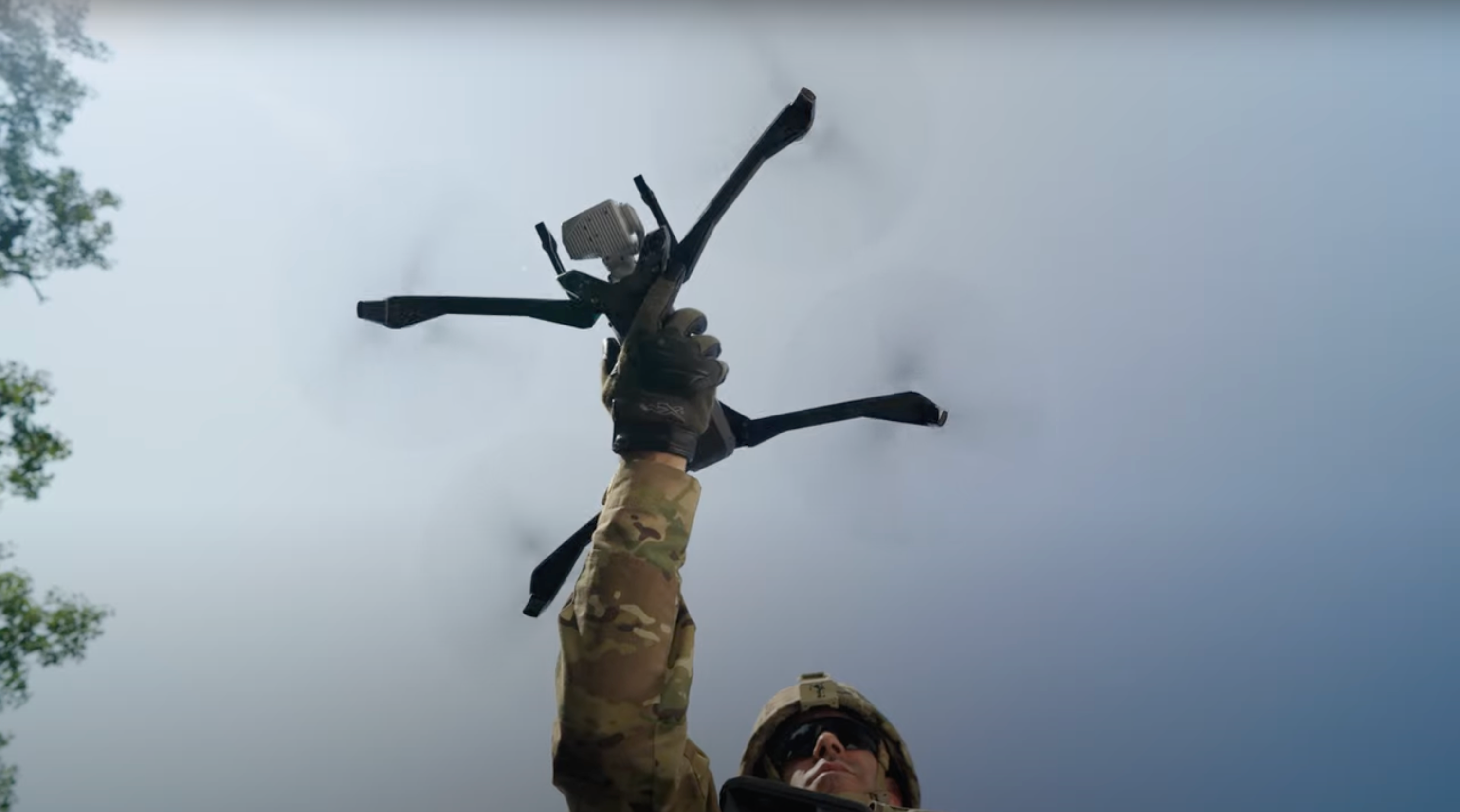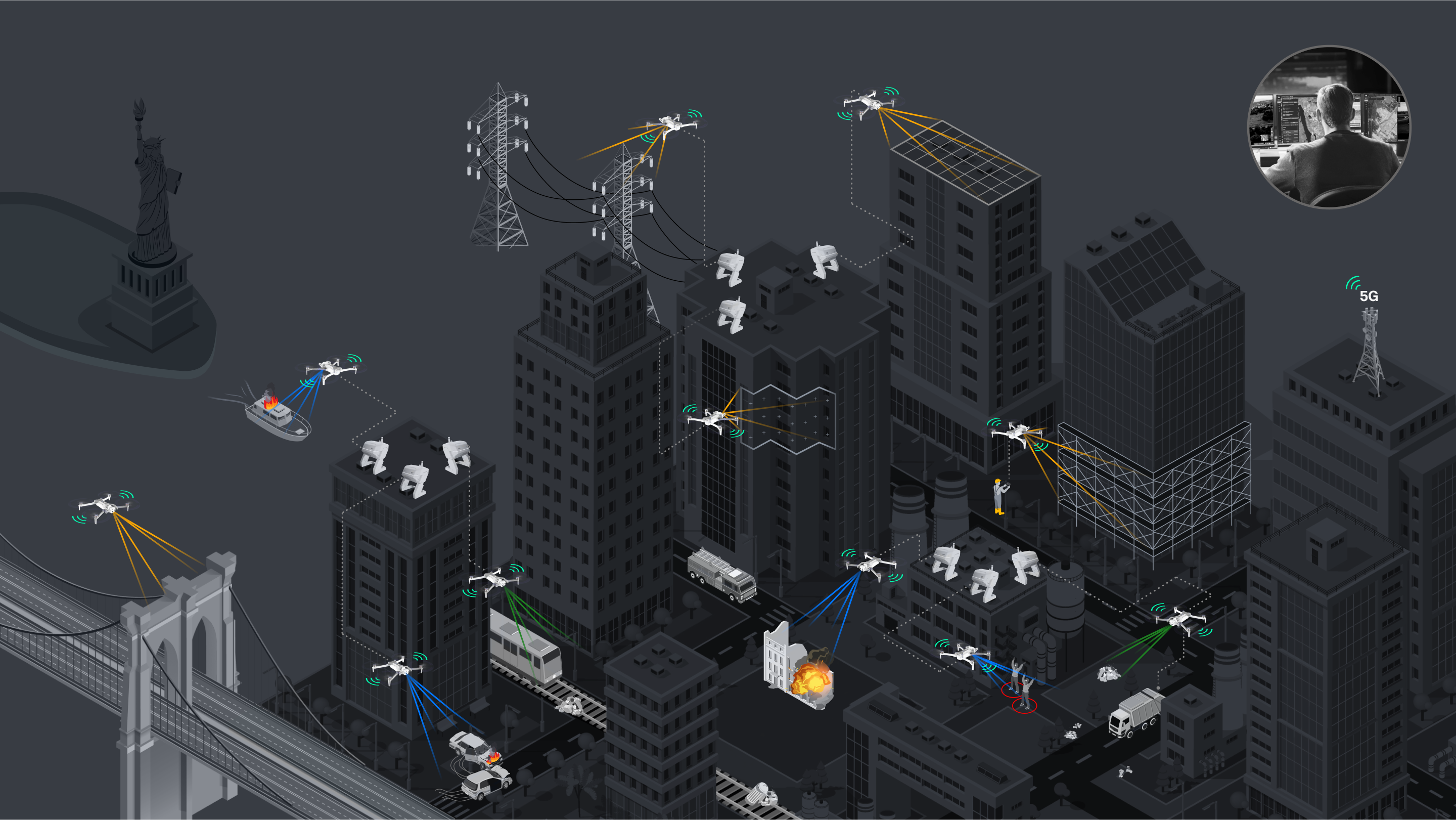Enhancing Public Safety: The Impact of Drones for First Responders
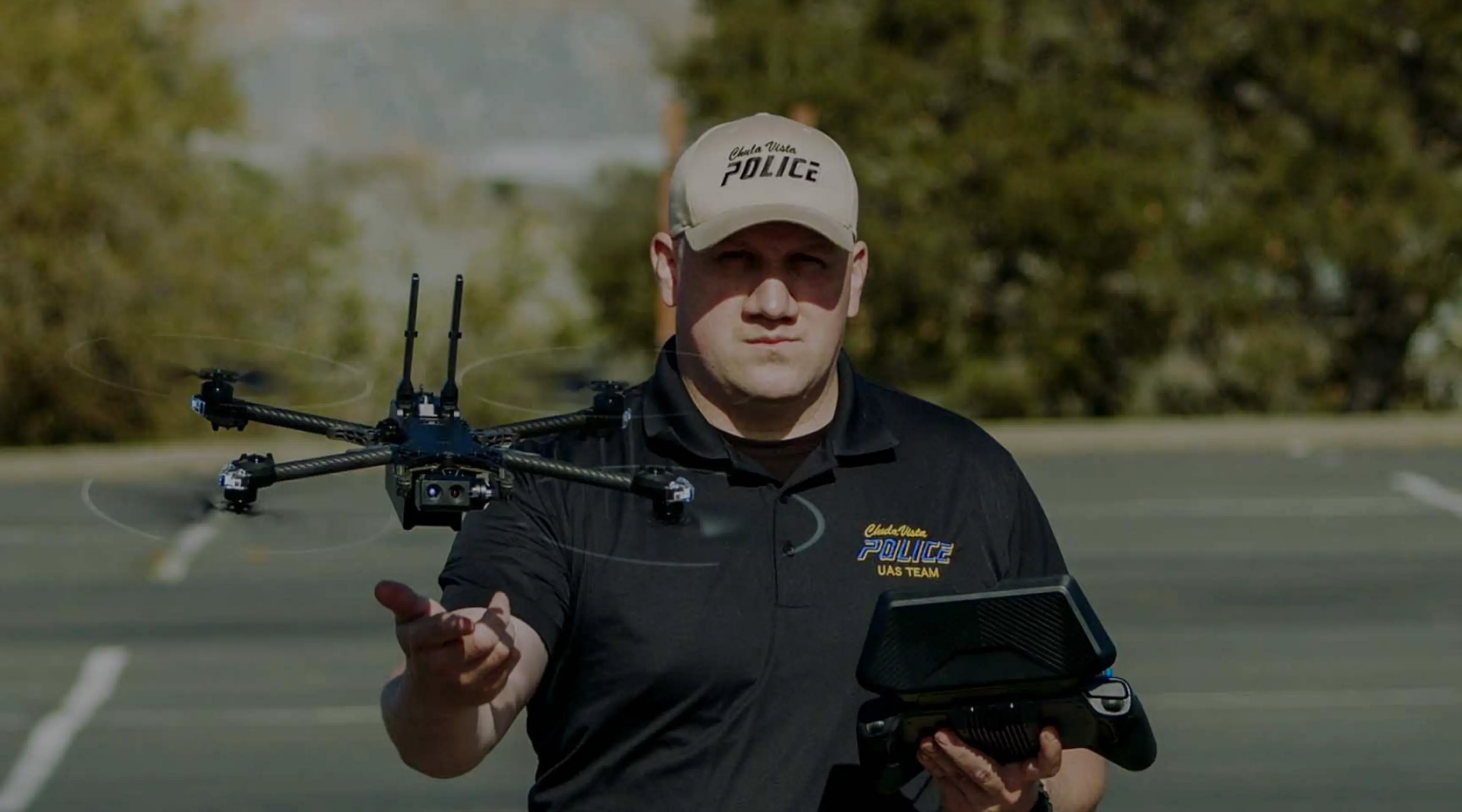
Drones can play a pivotal role in enhancing public safety, which is why first responders of all kinds are increasingly using them to do their jobs more efficiently. Whether it be a natural disaster, traffic accident, or another kind of emergency where danger is present and the priority is public safety, using drones can be instrumental in helping quickly gather information and de-escalate a situation.
Drones can provide several advantages in various critical incidents, including increasing situational awareness and providing much-needed information in a time of crisis. While many different kinds of first responders can utilize drones for this purpose, this article will mainly focus on the ways drones can support law enforcement.
Types of law enforcement that can use public safety drones
When thinking about using drones for public safety, law enforcement is typically the kind of first responder that comes to mind. Specialized units, such as SWAT teams, crash teams, crime scene investigation units, and search and rescue teams, can greatly benefit from the use of drones.
Other agencies can benefit from drone technology too. Park police, who are usually responsible for large swaths of land, can use drones for public safety. In addition, federal agencies, such as the FBI, can make use of drones when executing big events. The FBI’s evidence response teams can employ drones in their work too—demonstrating how many different purposes drones can serve within one agency alone.
Emergency situations in which drones can help
Drones and public safety can go hand in hand in a number of different emergency situations. SWAT teams can use drones for increased intelligence during highly dynamic hostage and barricade situations, allowing officers to monitor an area they may not be able to see, so they can mitigate any dangers. Crash teams and crime scene investigation units can, meanwhile, use drones for scene documentation to create courtroom-ready deliverables, which are models or diagrams of a scene and additional forensic analysis.
The benefits of law enforcement using drones for public safety
The potential advantages are endless, but here are a few of the key benefits:
Situational awareness
For law enforcement to do their job properly, officers and the community must be kept safe. Drones can assist by providing information that may be out of law enforcement’s line of sight, increasing situational awareness. Using cameras and sensors, they can provide an aerial view of any emergency scene, helping officers make informed, safe decisions about next steps. This technology enables officers to take their time so they are not making rushed decisions, giving them a better chance of keeping themselves and the community safe.
In highly dynamic barricade situations, where an individual is a danger to themself or others and refuses to present themself to officers, SWAT teams can create a perimeter around the area where the individual is located; the team can then use drones to gain as much intelligence as possible about what is happening in a place they cannot see while mitigating the dangers to everyone involved.
Documentation
Crash teams and crime scene investigation units can also use drones for scene documentation, and the imagery captured can serve as courtroom-ready deliverables. For any type of crime or crash, 2D diagrams are used as evidentiary items in court. When a drone is used to capture images of any outdoor scene, the generated orthomosaic image can be used to create a diagram of the scene.
Skydio’s high-quality drone images can also be processed into a point cloud, which is a collection of points in 3D space, and that can be used to provide spatial awareness and perspectives that are otherwise difficult to understand rather with 2D images. Furthermore, it allows for additional forensic analysis to be completed.
De-escalation
Drones have de-escalation capabilities, which can greatly improve public safety. When an officer is on the ground responding to a highly dynamic, potentially dangerous situation, they are reliant on their own fixed perspective while experiencing a rush of adrenaline. Using a drone allows for additional experienced officers to have eyes on the scene and to feed information to the person on the ground, forcing the officer on the ground to slow down, which can be a key factor in de-escalating the situation.
Additional drone uses for first responders
To increase public safety, drones can be used by many different types of first responders, including search and rescue teams, firefighters and traffic controllers. They can also be invaluable when assessing hazmat incidents, assessing natural disasters and monitoring crowds.
When carrying out a search and rescue mission, teams can utilize drones to determine where to go, how many people are needed, and what dangers are present on any given mission. These operations are highly time-sensitive, and drones can cover a large area much quicker than teams of people walking or driving in a straight line.
Using thermal imaging, drones can more easily detect if people are present in an area by identifying body heat. Drones can also access remote or dangerous areas safely so humans do not have to. They can provide real-time visual data to rescue teams, helping to save lives and keep people safe.
Firefighters can also use drones in public safety measures. This technology can identify hotspots in wildfires or buildings using thermal imaging cameras, helping firefighters gain a better understanding of the situation and plan a more informed, safer response. Resource allocation is key in active fires and thermal imaging can assist in determining if the teams can move on to the next position.
Skydio drones as force multiplier
The Skydio X10 can act as a force multiplier for first responders, providing eyes on a situation and allowing officers to optimize the way they disperse resources. This drone features a FLIR Boson+ thermal camera which can easily identify a human being’s location by detecting body heat, and determine the difference between a warm body and a warm roadway. Skydio’s obstacle-avoidance makes it easy to fly in any location, including those that are hard to reach. It records all footage that it captures, and that footage can be watched in real-time on a livestream or revisited later.
Using one single drone, it’s easy to have immediate aerial intelligence on a scene that would not otherwise be possible. This can help officers gauge whether or not a call is worth responding to and how many officers are needed. Agencies currently using drones, upon call notification, are reporting that roughly 20% of calls can be disregarded, allowing officers to focus their efforts elsewhere.
At Skydio, we understand the problems law enforcement are facing right now, which include staffing shortages, and we believe we can help officers do their jobs more efficiently, better their communities, and enhance public safety using drones.
The ease of operating a Skydio drone
Though learning to fly a drone may seem intimidating, it’s actually far easier than it looks—with a Skydio drone at least. Thanks to Skydio’s advanced technology and smart design, these drones are user-friendly and accessible.
A little training goes a long way with the Skydio X10; if you can learn to use a smartphone or operate a drill, you can fly this drone. In fact, the drone is actually quite difficult to crash thanks to Skydio’s autonomous functionality, which allows the drone to see in every direction at the same time while avoiding any obstacles.
Drone as First Responder
At Skydio, we believe drones used for public safety are drones well used. We also believe the potential for drones to enhance public safety is limitless. Going forward, we see drones acting as first responders by docking the vehicles in pre-positioned locations throughout a jurisdiction, namely those that experience high rates of crime. These drones can then be automatically deployed, in sync with the notification of a 911 call, eliminating the delayed information process. Skydio’s thought leaders are working to help realize this future state of policing.
Drones for public safety: The Five Cs
The concept of the Five Cs is one that Skydio developed together with DRONERESPONDERS, a non-profit public safety program, and it outlines principles on the responsible use of drones by public safety agencies. These guidelines can serve as a resource to help guide the use of drones by first responders:
- Community Engagement and Transparency
Engaging in ongoing conversations with community members is essential when developing a drone program. Community engagement must include both public participation and transparency. - Civil Liberties and Privacy Protection
Drone programs must be based on the protection of privacy and the promotion of civil liberties. - Common Operating Procedures
Common operating procedures should be developed to guide the responsible use of drones, and the Five Cs can be used as a roadmap to ensure best practices are being followed. - Clear Oversight and Accountability
Oversight measures that ensure compliance and accountability are essential for drone use by agencies, and clear oversight processes that combine both internal and external measures must also be established. - Cybersecurity
Modern-day drones are network-connected devices, so they require cybersecurity reviews for safe use.
Leading the way in remote connectivity
Skydio’s latest technology has 5G connectivity, which allows us to get to the next stage, and we have named this method of deployment as Patrol-Led Drone as First Responder. So while an officer certainly can control the drone they carry in their patrol vehicle, they do not have to. They can choose to power it on, put it on the ground, ready it for launch, and a remote pilot in another location can control it so they can get back to work and focus on what they need to do. This way, the officer is not stuck in one spot and forced to operate the controller.
Previously, another officer had to be taken out of the field to operate a drone despite already decreased staffing, we now have the ability to give up that control to someone else in a different location. They can share any information gathered by the drone to any of the officers on the ground or other stakeholders via the radio, and anyone with the right permissions can view the live stream. When the call is complete, that remote pilot could fly back to the patrol officer’s car, or the officer could take back command of the drone whenever they choose. With this 5G technology, we are one step closer to truly having drones as first responders.
Law enforcement is undoubtedly facing a number of challenges right now, particularly a lack of manpower, and a Skydio drone can act as an invaluable tool and “team member.” Skydio drones can help officers work more efficiently, allowing for much-needed resources to be allocated in the best way possible. Drones can act as a force multiplier and identify situations that can be disregarded so more important issues can be addressed in a more timely manner.
Drones provide officers with increased situational awareness, comprehensive documentation of a scene, and they can aid in de-escalating dynamic situations. By allowing experienced officers to have eyes on a scene from any location, drones can mitigate the risks present in day-to-day calls to service. Ultimately, we know a first responder’s No. 1 priority is public safety, so at Skydio, we are proud that our drone technology can play a critical supporting role in ensuring officers and community members stay safe in all kinds of emergency situations.
Learn more about how Skydio drones can help enhance public safety.
